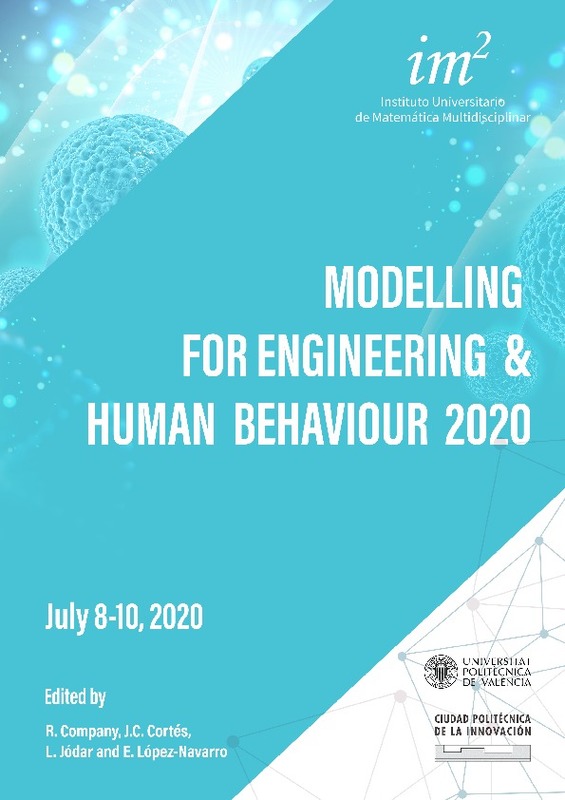JavaScript is disabled for your browser. Some features of this site may not work without it.
Buscar en RiuNet
Listar
Mi cuenta
Estadísticas
Ayuda RiuNet
Admin. UPV
Efficient finite element modelling of sound propagation in after treatment devices with arbitrary cross section
Mostrar el registro sencillo del ítem
Ficheros en el ítem
| dc.contributor.author | Denia Guzmán, Francisco David
|
es_ES |
| dc.contributor.author | Sánchez Orgaz, Eva María
|
es_ES |
| dc.contributor.author | Ferrándiz-Catalá, Borja
|
es_ES |
| dc.contributor.author | Martínez Casas, José
|
es_ES |
| dc.contributor.author | Baeza González, Luis Miguel
|
es_ES |
| dc.date.accessioned | 2021-12-09T07:08:27Z | |
| dc.date.available | 2021-12-09T07:08:27Z | |
| dc.date.issued | 2020-07-10 | es_ES |
| dc.identifier.isbn | 978-84-09-25132-2 | es_ES |
| dc.identifier.uri | http://hdl.handle.net/10251/178038 | |
| dc.description.abstract | [EN] The acoustic modelling of exhaust after-treatment devices, such as catalytic converters (CC) and diesel particulate filters (DPF), usually requires the use of multidimensional numerical techniques to assess the influence of higher order modes on the sound attenuation performance. Three-dimensional (3D) wave propagation can be considered through the finite element method (FEM). With a view to improving the computational expenditure of full 3D FEM, an efficient modelling technique is presented in this work to speed up transmission loss (TL) calculations in after-treatment devices with arbitrary cross section incorporating monoliths. The efficient modelling approach is based on the mode matching method, combining: (1) transversal pressure modes computed through a 2D FEM approach for devices with arbitrary but axially uniform cross section; (2) compatibility conditions of the acoustic fields at the device geometric discontinuities. For the acoustic modelling of monoliths, these are replaced by four pole transfer matrices relating the acoustic fields at both sides of the monolithic region. Mode matching TL results are compared with full 3D FE simulations and experimental measurements for some selected configurations, showing a good agreement. For a given accuracy, the computational efficiency of the mode matching technique proposed in this work improves that of full 3D FE calculations. TL improvements are achieved by suitable locations of a DPF inlet/outlet ducts. Next, a Genetic Algorithm (GA)-based optimization approach is used in order to improve the attenuation performance of the after-treatment device by varying the geometry as well as the monolith properties. Results show that the optimized configuration outperforms the initial design at target frequencies. | es_ES |
| dc.description.sponsorship | The authors gratefully acknowledge the financial support of Ministerio de Ciencia, Innovación y Universidades-Agencia Estatal de Investigación through project TRA2017-84701-R and Generalitat Valenciana through project PROMETEO/2016/007. | es_ES |
| dc.language | Inglés | es_ES |
| dc.relation.ispartof | Modelling for Engineering & Human Behaviour 2020 | es_ES |
| dc.rights | Reserva de todos los derechos | es_ES |
| dc.subject | Acoustics | es_ES |
| dc.subject | Finite element method | es_ES |
| dc.subject | Mode matching method | es_ES |
| dc.subject | Monolith | es_ES |
| dc.subject | Catalytic converter | es_ES |
| dc.subject | Diesel particulate filter | es_ES |
| dc.subject | Transfer matrix | es_ES |
| dc.subject | Transmission loss | es_ES |
| dc.subject | Optimization | es_ES |
| dc.subject.classification | INGENIERIA MECANICA | es_ES |
| dc.title | Efficient finite element modelling of sound propagation in after treatment devices with arbitrary cross section | es_ES |
| dc.type | Comunicación en congreso | es_ES |
| dc.type | Capítulo de libro | es_ES |
| dc.relation.projectID | info:eu-repo/grantAgreement/AEI/Plan Estatal de Investigación Científica y Técnica y de Innovación 2013-2016/TRA2017-84701-R/ES/DESARROLLO DE UN MODELO INTEGRAL DE INTERACCION VEHICULO%2FVIA EN CURVA PARA LA REDUCCION DEL IMPACTO ACUSTICO DEL TRANSPORTE FERROVIARIO/ | es_ES |
| dc.relation.projectID | info:eu-repo/grantAgreement/GVA//PROMETEO%2F2016%2F007//Modelado numérico avanzado en ingeniería mecánica/ | es_ES |
| dc.rights.accessRights | Abierto | es_ES |
| dc.contributor.affiliation | Universitat Politècnica de València. Departamento de Ingeniería Mecánica y de Materiales - Departament d'Enginyeria Mecànica i de Materials | es_ES |
| dc.description.bibliographicCitation | Denia Guzmán, FD.; Sánchez Orgaz, EM.; Ferrándiz-Catalá, B.; Martínez Casas, J.; Baeza González, LM. (2020). Efficient finite element modelling of sound propagation in after treatment devices with arbitrary cross section. 59-65. http://hdl.handle.net/10251/178038 | es_ES |
| dc.description.accrualMethod | S | es_ES |
| dc.relation.conferencename | Mathematical Modelling in Engineering & Human Behaviour 2020 | es_ES |
| dc.relation.conferencedate | Julio 08-10,2020 | es_ES |
| dc.relation.conferenceplace | Valencia, España | es_ES |
| dc.relation.publisherversion | https://jornadas.imm.upv.es/2020/home.html | es_ES |
| dc.description.upvformatpinicio | 59 | es_ES |
| dc.description.upvformatpfin | 65 | es_ES |
| dc.type.version | info:eu-repo/semantics/publishedVersion | es_ES |
| dc.relation.pasarela | S\415203 | es_ES |
| dc.contributor.funder | Generalitat Valenciana | es_ES |






